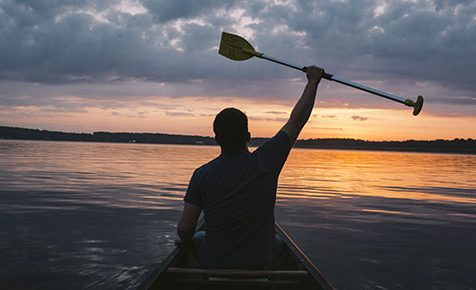Why Choose Bemidji
Are you looking for a place to locate your family or business that has great quality of life and enjoys economic prosperity? Then Bemidji, Minnesota is the place for you.
The First City on the Mississippi River, Bemidji is located in north central Minnesota at the intersections of U.S. Highway 71 and U.S. Highway 2, approximately 230 miles northwest of the Minneapolis/St. Paul metropolitan area. One of the fastest growing communities in Minnesota, Bemidji is the county seat of Beltrami County with a 2013 population of 13,646. There are more than 80,000 residents in the (45-mile) Secondary Market Area and nearly 350,000 in the (90-mile) Tertiary Market Area. The Bemidji Regional Airport represents one of the busiest regional airports in the state, with nearly 30,000 enplanements annually. Bemidji is home to Bemidji State University, a four year liberal arts university with an enrollment of approximately 5,000 students.
Lake Bemidji presents a tranquil backdrop for our charming community. A tourism hub, Bemidji is located near many popular recreational destinations, including Itasca State Park, Lake Bemidji State Park, state forest areas, and the Chippewa National Forest. There are 400 fishing lakes within 25 miles of the city. Over 500 miles of snowmobile trails and 160 kilometers of cross-country ski trails are in and around Bemidji provide abundant winter recreational opportunities. During the summer, more than 25,000 visitors a month stop to take pictures at the iconic statues of Paul Bunyan and Babe the Blue Ox.

A Little History
Shawnowshkung (He Rattles) aka Chief Bemidji and other Cassand Leech Lake Ojibwe made their first permanent settlement on the south shore of Lake Bemidji. An elder and spokesman for the group,Shawnowshkung later welcomed the first white settlers. When Shaynowishkung shared the name of Lake Bemijigamaag (lake with cross waters), the settlers thought he was sharing his name, so they mistakenly named the new village Bemidji after him. Forced to remove to his allotment on the Cass Lake Reservation he died in 1904 of pneumonia. He had hoped that he would be buried on his land in Bemidji but was not.
Bemidji is a "golden city" along the river's bank, only miles from where the mighty Mississippi River begins its 2,552 mile journey to New Orleans and the Gulf of Mexico, a city at the center of the legends of Paul Bunyan and Babe the Blue Ox.
Things to Do in Bemidji
No visit to Bemidji is complete without a visit to the Tourist Information Center located on the shores of Lake Bemidji. Here stand the famous statues of Paul and Babe. These statues were constructed in 1937 to portray the legendary lumberjack Paul Bunyan and his pet ox Babe.Also,theBemidji Sculpture Walkstarts at the Tourist Information Center and is a must for visitors and residents to enjoy. A short walk to north takes you to the Historic Carnegie Librarywhich was built in 1910 and is the focusa major fundraiser to restore and repurpose this beautiful building.
Visitors to Bemidji have a variety of activities from which to choose. Stay one day or stay one month - the variety of activities will keep you busy! Without leaving the City you could--catch a lunker in the morning, enjoy a fine meal at one of our many eateries, then take in a movie or a theater performance at the Paul Bunyan Playhouse to complete your day! Or adventure outside the City to explore the miles of trails winding through the forest - hiking, biking, walking, snowmobiling, groomed or un-groomed trails - the great outdoors awaits you.
Bemidji sits within a 35 mile radius of 400 fishing lakes including Lake Bemidji, Lake Plantaganet, Cass Lake, Lake Andrusia, Kitchie Lake, Blackduck Lake, Leech Lake, Lake Winnibigoshishand Wolf Lake. These lakes are home to northern pike, walleye, muskie, large mouth bass, panfish and even brook, brown and rainbow trout.
Bemidji also presents a unique blend of Indian culture and folklore. Bemidji's fame has been renowned as the home of the folk heroes, Paul Bunyan and Babe the Blue Ox. Both the folklore and Indian legends are historically commemorated in the lakeside statutes and local shops.
